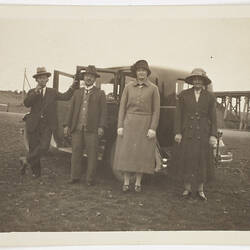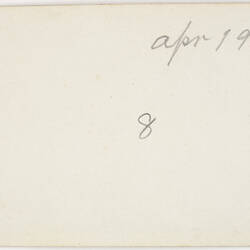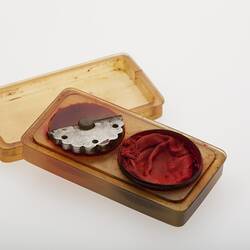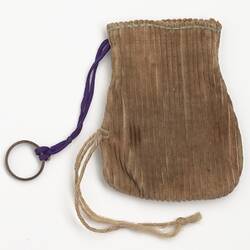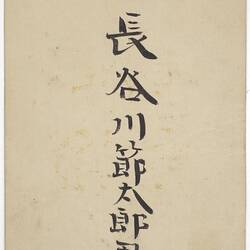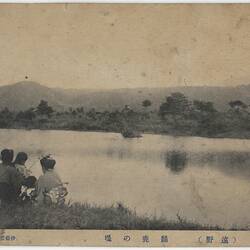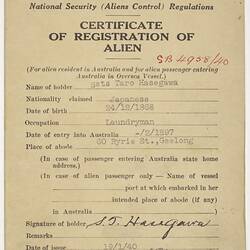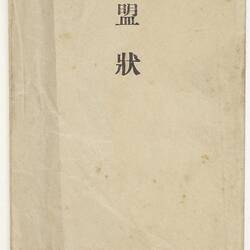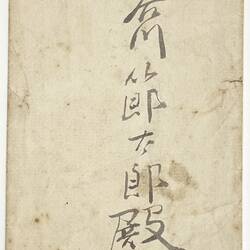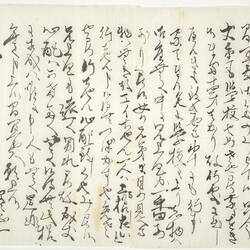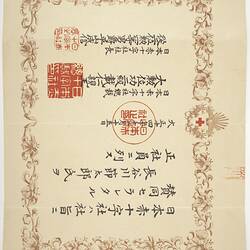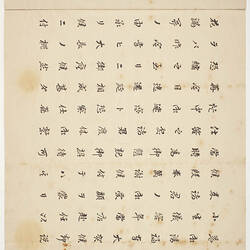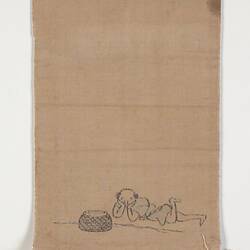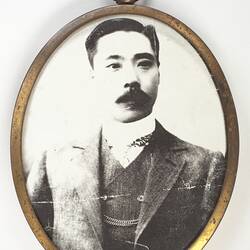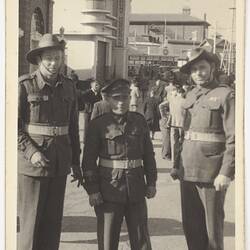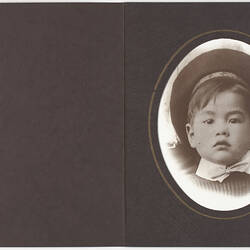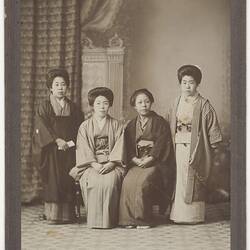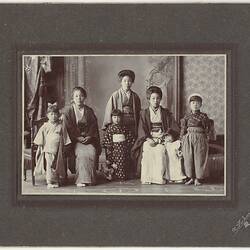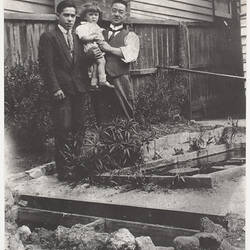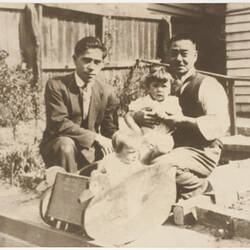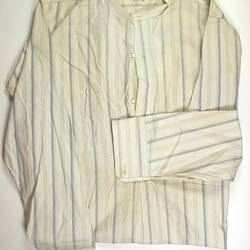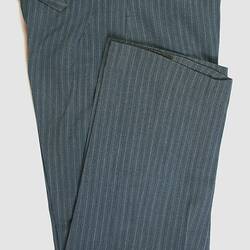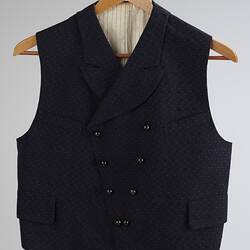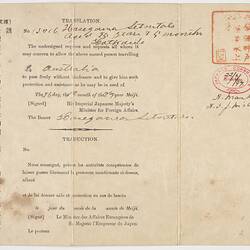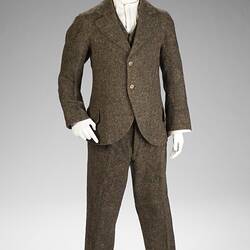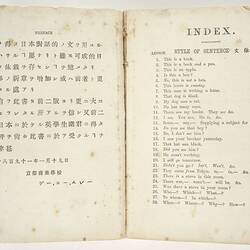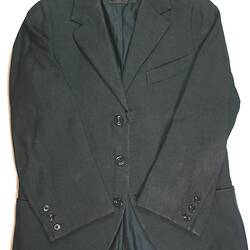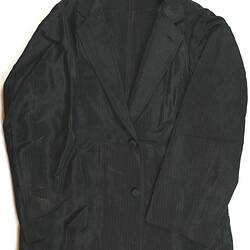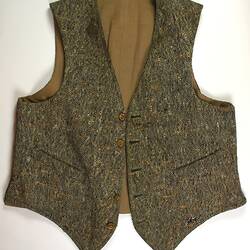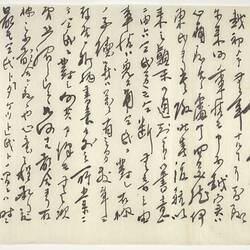Summary
Digital photograph of Japanese immigrant Setsutaro Hasegawa with friends, on an outing near Geelong in April 1930. There was a small Japanese community in Geelong during the 1920s and 1930s. Left to right: Motoshiro Ito, Setsutaro, Ito's wife Bertha and Ada May Furuya, wife of George Furuya (who is probably taking the photograph).
Setsutaro migrated to Australia from Japan in 1897 at the age of 26, just four years before the introduction of the Immigration Restriction Act which severely limited migration to Australia from countries in Asia. He established a laundry business in Geelong and by 1911 he had married an Australian-born woman and had three children.
In 1941 Setsutaro was arrested as an enemy alien and sent to Tatura internment camp in northern Victoria. Released early in 1943 due to his age and poor health, unlike most Japanese interns he was not deported to Japan after the War. Setsutaro remained in Geelong for the rest of his life and died in 1952.
Motoshiro and George and were also arrested, despite being married to Australian-born women, having Australian-born children, and living away from Japan for over thirty years. Like Setsutaro, George Taro Furuya was an elderly man when he was interned. His early release in 1943 assisted Setsutaro's eldest son Leo, who was serving in the civilian military forces, to petition on his father's behalf. Motoshiro remained in detention until the end of the war. All three men were lucky and avoided deportation.
Description of Content
Photograph of Setsutaro Hasegawa and friends, standing in front of a car, on an outing near Geelong in April 1930. Setsutaro is the second male from the left.
Physical Description
Black and white photograph
Significance
The Hasegawa collection enables the exploration of a number of important historical themes relating to migration, working life, and wartime internment in Victoria. Late nineteenth century and early to mid twentieth century Japanese migration and settlement experiences are little represented in the museum's collections and this collection of clothing, documents, personal items and photographs helps to redress.
More Information
-
Collecting Areas
-
Acquisition Information
Donation from Andrew Hasegawa, 08 Oct 2009
-
Place & Date Depicted
-
Person Depicted
Mr Setsutaro Hasegawa, Geelong District, Victoria, Australia, Apr 1930
-
Format
Digital file, Black & White
-
Inscriptions
Written on the back of the image: 'Apr 1930 - 8'.
-
Classification
-
Category
-
Discipline
-
Type of item
-
Dimensions
85 mm (Width), 59 mm (Height)
Photograph dimensions
-
Keywords
Cars, Japanese Communities, Japanese Immigration, Photography, Picnics & Picnicking, Recreation

